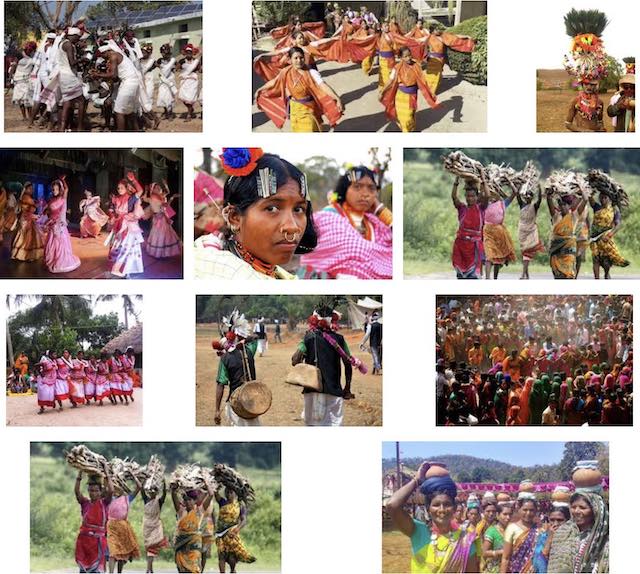The National Food Security Act is finally making headway in the poorest States. Amplified by reforms in the Public Distribution System, a modicum of nutritional support and economic security to all vulnerable households is now a real possibility.
Dhobargram is a small Santhal village in Bankura district of West Bengal, with 100 households or so. Most of them are poor, or even very poor, by any plausible standard. There are also some relatively well-off households — they are not rich, but they have things like concrete houses and motorcycles, often thanks to a permanent job in the public sector. Should this small minority of better-off households be excluded from the Public Distribution System (PDS)? […]
When they are included, there is greater pressure on the system to work. […]
Judging from brief enquiries in Jharkhand and Odisha, which are also in the process of rolling out the NFSA, there are similar developments there. The biggest challenge, responsible for the delayed rollout of NFSA in many States, is to identify eligible households. Even with near-universal coverage (86 per cent in rural Jharkhand and 82 per cent in rural Odisha), this is a daunting task. […]
Perhaps for the first time, there are real possibilities of ensuring a modicum of nutritional support and economic security to all vulnerable households.
(Jean Dreze is a Visiting Professor at the Department of Economics, Ranchi University.)
Source: National Food Secuity Act: Leaving no poor person behind, The Hindu (Opinion), 13 January 2016
Address: https://www.thehindu.com/opinion/lead/leaving-no-poor-person-behind/article8098918.ece
Date Visited: 14 January 2022
Adivasi communities traditionally depended on the forest for all their nutritional needs. They subsisted mainly on fruits, vegetables, tubers, fish, small game as well as the occasional crop they grew, predominantly coarse grains. However, as time passed and the nature of, as well as their access to, forests changed, their diet started becoming deficient. […]
This deficiency started manifesting in the form of rampant malnutrition, among adults and children alike, underweight babies as well as high maternal mortality [and] increased susceptibility to Tuberculosis among the Adivasis.
Blog post “Gardening their way to Good Health” by ACCORD – Action for Community Organisation, Rehabilitation and Development (Accordweb, 14 March 2017) | Backup file:
On India’s 73rd Independence Day, we need to grapple with the shameful fact that over one-third of the world’s malnourished live in India. In Outlook this week, our I-Day special cover story asks- what about azadi from hunger?
Poshan #OutlookThisWeek
Posted: Aug 15, 2019 on https://youtu.be/WWjM5xTGOps >>
Follow this story and more: https://www.outlookindia.com/
Discussing the challenge ahead for millions of India in the foreseeable future:
How to bring down the rate of stunting and wasting to single digit rates? [5:35] >>
Up-to-date reports by Indian experts and journalists
Search tips
Combine the name of any particular state, language or region with that of any tribal (Adivasi) community.
Add keywords of special interest (music, poetry, dance just as health, sacred grove and biodiversity); learn about the rights of Scheduled Tribes such as the “Forest Rights Act” (FRA); and the United Nations “Declaration on the Rights of Indigenous Peoples”, “Universal Declaration of Human Rights”, “women’s rights”, or “children’s right to education”.
Specify any other issue or news item you want to learn more about (biodiversity, bonded labour and human trafficking, climate change, ecology, economic development, ethnobotany, ethnomedicine, global warming, hunter-gatherers in a particular region or state, prevention of rural poverty, water access).
For official figures include “scheduled tribe ST” along with a union state or region: e.g. “Chhattisgarh ST community”, “Himalayan tribe”, “Scheduled tribe Tamil Nadu census”, “ST Kerala census”, “Particularly Vulnerable Tribal Group Jharkhand”, “PVTG Rajasthan”, “Adivasi ST Kerala”, “Adibasi ST West Bengal” etc.
In case the Google Custom Search window is not displayed here try the following: (1) toggle between “Reader” and regular viewing; (2) in your browser’s Security settings select “Enable JavaScript” | More tips >>
Note: hyperlinks and quotes are meant for fact-checking and information purposes only | Disclaimer >>
List of websites covered by this Google custom search engine
Academia.edu (platform for academics to share research papers) – www.academia.edu
Archive.org – https://archive.org
Centre for Science and Environment – https://www.cseindia.org
Current Conservation – https://www.currentconservation.org
Development and Cooperation (D+C) https://www.dandc.eu
Down To Earth (India) – www.downtoearth.org.in
India Environment Portal – www.indiaenvironmentportal.org.in
Harnessing Nature Magazine – https://harnessingnature.online
Mongabay-India – https://india.mongabay.com
M S Swaminathan Research Foundation – www.mssrf.org
Navdanya (protecting India’s biodiversity based food heritage) – https://navdanya.org
Third World Network (Penang, Malaysia) – https://twn.my
The Shola Trust (nature conservation in the Nilgiri region) – www.thesholatrust.org

Indian online periodicals and platforms | Images view >>
~ ~ ~
Personalize your CustomSearch by combining other search words >>
(e.g. name of a tribal community and region, a craft, or dance and puppetry)
Research the above issues with the help of Shodhganga: A reservoir of theses from universities all over India, made available under Open Access >>
Note: hyperlinks and quotes are meant for fact-checking and information purposes only | Disclaimer >>